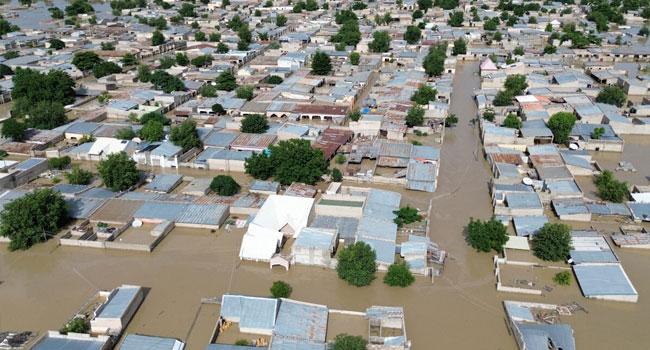The Federal Government has issued a warning of anticipated heavy rainfall and flooding across 30 states and the Federal Capital Territory (FCT), Abuja, in 2025.
The high-risk states identified include: Abia, Adamawa, Akwa Ibom, Anambra, Bauchi, Bayelsa, Benue, Borno, Cross River, Delta, Ebonyi, Edo, Gombe, Imo, Jigawa, Kebbi, Kogi, Kwara, Lagos, Nasarawa, Niger, Ogun, Ondo, Osun, Oyo, Rivers, Sokoto, Taraba, Yobe, Zamfara, and the FCT.
Minister of Water Resources and Sanitation, Joseph Utsev, revealed this on Thursday during the public presentation of the 2025 Annual Flood Outlook (AFO) by the Nigeria Hydrological Services Agency (NIHSA) in Abuja. He noted that parts of the South-South region—specifically Bayelsa, Cross River, Delta, and Rivers—are expected to experience coastal and riverine flooding due to rising sea levels. Akwa Ibom and Edo were also flagged among the states with high flood risks.
The 2025 AFO is structured in three phases, designed to address flood-related challenges and provide timely information for effective mitigation, particularly in vulnerable communities.
According to the minister, floods remain among the most destructive natural disasters in Nigeria, with climate change intensifying their frequency and impact. This year, 1,249 communities across 176 Local Government Areas (LGAs) in 30 states and the FCT have been identified as high-risk zones. An additional 2,187 communities in 293 LGAs fall under moderate flood risk areas.
To improve preparedness and response, this year’s flood outlook adopts a community-based forecasting approach. This shift allows for more localized and actionable flood predictions, enhancing early warning capabilities at the grassroots level.
Permanent Secretary of the Ministry, Richard Pheelangwah, emphasized the importance of proactive response measures, stating, “This outlook isn’t just about numbers; it’s about saving lives and livelihoods.”
Director General of NIHSA, Umar Mohammed, also highlighted the expanded scope of this year’s forecast, noting that it now includes specific communities and sector-based impact assessments on health, education, agriculture, and infrastructure to better equip policymakers and disaster managers.
